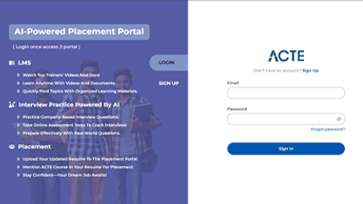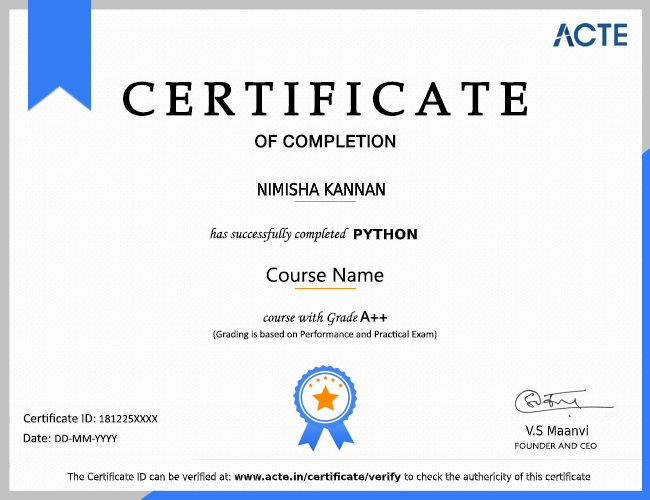Additional Info
Future of Tableau :
Data visualization and business intelligence have been named as the top technologies. A career as a tableau professional will be lucrative, and many market leaders in South Asia are currently hiring Tableau engineers and data analysts. Many experts have recognized the importance of business intelligence and data visualization and have joined on board. Because data analysis and visualization are the way of the future, Tableau offers a promising career path in only a few tears.
Tableau Career Opportunities :
Many firms are migrating to Tableau, resulting in a slew of tableau job openings every day. There will be a huge demand for data scientists and tableau professionals. So, if you're debating whether or not to pursue a career in tableau, you've come to the correct spot.
Role of Certified Tableau Developer :
To create BI reports, a tableau developer must collaborate with other developers and marketing departments. They also take part in feedback sessions to help improve the current systems' performance. If the individual has good team skills, problem-solving skills, managerial skills, and time management, the position is a fantastic career in tableau. A Tableau developer's primary responsibility is to create system visualizations and presentations. They must also infer data in order to improve business performance. A Tableau developer's business intelligence is crucial.
Primary Role of Tableau Developer :
- A tableau expert is required to come up with technological solutions to business issues. With the help of Tableau visuals, they may come up with an inventive solution.
- The expert is anticipated to be knowledgeable enough to work with storage equipment. The developer protects the organization's data within itself through online analytical processing.
- To examine the performances, they must write test queries and run unit tests. Throughout the development phase, this will be a constant process.
- As the company grows and the data becomes more complex, the professional should be able to improve the systems.
- To extract solutions from data, the developer must pay close attention to it.
- To develop the documentation, you must have a strong grasp of the English language and excellent communication abilities.
- They'll need troubleshooting skills as well because they'll be working on the program from start to finish.
Skill Requirement for Tableau :
Microsoft Power BI, Oracle BI, and other business intelligence software SQL Server Reporting Services (SSIS) and SQL Server Analysis Services are two SQL language tools (SSRS). Online analysis processing (OLAP) and ETL frameworks are examples of data analysis tools. Knowledge of big data is advantageous for a job in tableau, and analyzing big data using Tableau is simple and straightforward. It is the most practical solution for all parties involved. Because of the massive Hadoop datasets that are available, this is the case. Tableau can connect to any type of data, from a simple MS Excel spreadsheet to cloud services. It can also link you to third-party cloud services like Amazon or Salesforce. It offers a web data connection API that allows you to access data from the cloud directly. Tableau can also forecast data, allowing us to go further into our research. Smoothing is the term describing the process of anticipating Tableau.
Tableau Tools :
Tableau Desktop: It is a powerful tool that lets us code and creates reports. All of the essential work is done in Tableau Desktop, from creating reports and charts to combining them all to produce a dashboard.
Personal Tableau Desktop: The Tableau desktop's version keeps the worksheet private and restricts access. The workbooks cannot be made available on the internet. As a result, it should be disseminated either offline or publicly through Tableau.
Professional version of Tableau Desktop: It's a desktop version of Tableau. The primary distinction is that Tableau desktop workbooks can be published online or on the Tableau server. There is complete access to all data types in the professional edition. It's the greatest option for people who wish to publish their workbook to Tableau Server.
Tableau Public: This Tableau version is designed specifically for budget-conscious consumers. The term 'public' denotes that the workbooks created cannot be saved locally. They should be stored on Tableau's public cloud, which anyone can access and read. The files saved in the cloud have no privacy, therefore anyone can view and download the same information.
Tableau Online: Its functionality is identical to that of the tableau server, except data is kept on Tableau's cloud servers, which are managed by the company. There is no limit to the amount of data that may be stored in Tableau Online. Tableau Online establishes a direct connection to over 40 cloud-based data sources, including Hive, MySQL, Spark SQL, Amazon Aurora. Tableau Server and Desktop online both require workbooks prepared by Tableau Desktop to be published.
Tableau Server: The software is being utilized correctly to share workbooks and visualizations created in the Tableau Desktop application across the enterprise. You must first publish your worksheet in Tableau Desktop before sharing dashboards on Tableau Server. Only authorized users will be able to access the worksheet once it has been uploaded to the server.
Tableau Reader: Tableau Reader is a free application that lets us see visualizations and workbooks prepared with Tableau Desktop or Tableau Public. The data can be filtered, but it can't be modified or edited. Tableau Reader has no security because anyone may use it to read workbooks.
Various Career Prospects with Tableau Certification:
Data Analyst: Data systems and databases are designed and maintained, which includes addressing coding errors and other data-related issues.Data mining from primary and secondary sources, then restructuring the information into a manner that can be read by humans and machines.Using statistical methods to analyze data sets, with a focus on trends and patterns that could be useful for diagnostic and predictive analytics. Demonstrating the importance of their job in the context of local, national, and international trends that affect their company and industry.
Business Analyst: BAs are in charge of developing new models to assist business decisions by collaborating with financial reporting and IT teams to develop initiatives and strategies to improve importing and reduce costs. According to Robert Half Technology, you'll need a deep awareness of regulatory and reporting standards as well as plenty of experience in planning, budgeting, and financial analysis paired with comprehension of key performance metrics.
Business Analyst: In databases and applications, learning and completely comprehending the data landscape is essential. Developing and implementing data collection procedures. Validating and reviewing data. End-user reporting and dashboard requirements are being gathered.
BI Developer: BI developers, in general, turn a company's data into actionable insights that help stakeholders make better business decisions. With this in mind, a BI expert creates data-related strategies and roadmaps for the firm. On a technological level, BI developers are responsible for creating a BI interface that allows them to collect data and form hypotheses. Because different businesses adopt different approaches to data visualization, it necessitates business acumen.
Business Intelligence Analytics Manager: As a Business Intelligence and Analytics Manager, you'll be in charge of providing data and reporting platforms and solutions to key business stakeholders so they can make data-driven choices. You'll be in charge of the BI team's data strategy and day-to-day operations. The ideal candidate will be self-driven, creative, and enthusiastic about data.
Features of Tableau :
- Speed of Analysis Because it does not require a high level of programming knowledge, any user with access to data can begin utilizing it to extract value from the data right away.
- Tableau does not require a complicated software configuration to be self-sufficient. The desktop version, which is used by the majority of customers, is simple to set up and includes all of the capabilities required to begin and complete data analysis.
- Visual Discovery: The user uses visual tools such as colors, trend lines, charts, and graphs to explore and understand the data. Because almost everything is done by drag and drop, there aren't many scripts to write.
- Tableau allows you to integrate diverse relational, semistructured, and raw data sources in real-time without having to pay for expensive up-front integration. Users do not need to know how data is kept in detail.
- Tableau is architecture agnostic and works on a variety of devices where data flows. As a result, the user does not need to be concerned about certain hardware or software requirements in order to utilize Tableau.
- Tableau can filter, categorize, and discuss data in real-time, and it can integrate a live dashboard in portals like SharePoint or Salesforce. You can store your data view and invite colleagues to subscribe to your interactive dashboards so they can access the most up-to-date information.






